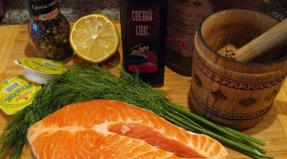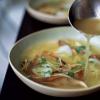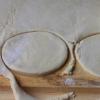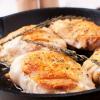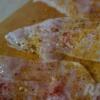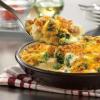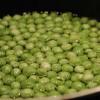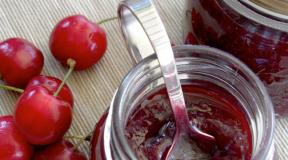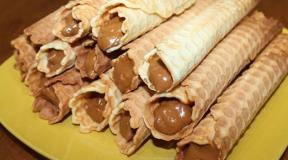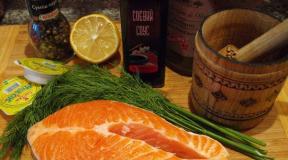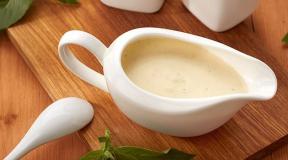How many calories are in 100 grams of pea porridge? Pea porridge recipe
Ancient Chinese philosophers called peas “a symbol of fertility, purity and wealth”; medieval French chefs served dishes with a valuable food product to the royal table. In Rus', before the advent of potatoes, the main dish was to cover human needs for vegetable protein, vitamins and carbohydrates, mineral salts and microelements. Boiled lean peas had a low calorie content, but they replaced meat products in the daily menu. Easily digestible, it contained a unique composition of amino acids - it was not for nothing that peas were called “meat for the poor.” Delicious boiled peas were included in a variety of dishes: soups and pies, sauces and stews, porridges and noodles.
According to classification, there are three types of plants such as peas. Its calorie content, as well as beneficial properties, are determined by its membership in a certain group.
In shelling peas, the peas themselves have a regular round shape; the leaves become hard when ripe. For long-term storage, whole peas are dried. The calorie content of such a product is quite high - from 298 to 311 kcal per 100 g of dry grains. An analysis of the energy value of peas shows that out of 298 kcal, proteins account for 82 kcal, fats - 18 kcal, and carbohydrates - 198 kcal. Table pea varieties are usually used for making soups, porridges or purees, and side dishes. Boiled shelling peas have a low calorie content in purees or soups, only 60 kcal, but they are rich in protein and are excellent for dietary nutrition.
Unlike shelled varieties, sugar snap peas value underdeveloped grains with a high moisture content. The beans of such peas are sweet in taste and fleshy, but during the drying process they wrinkle.
When ripening, brain peas change their round shape and wrinkle, resembling the brain membrane. These varieties are rich in sucrose, sweet in taste, and are used for canning. They are not suitable for heat treatment, although they have the lowest calorie content of all pea varieties.

Dietary dish: boiled peas, calorie content and benefits
Peas are often called the “king of grains” for their rich composition: a whole range of B vitamins, vitamins A and C, PP and E. The amount of minerals in peas is very high: calcium and potassium, phosphorus, magnesium, iron, iodine, selenium, sulfur , chlorine and others. The annual plant contains important amino acids, pyridoxine, many enzymes, and fiber. As the peas ripen, glucose turns into starch. Pea dishes are good for dietary nutrition, as well as for those who observe religious fasts.
Research by Canadian scientists has confirmed that vegetable pea protein is highly digestible, is an excellent alternative to meat, has a positive effect on the functioning of the heart and blood vessels, normalizes blood pressure, and eliminates swelling. Boiled peas, the calorie content of which can be a pleasant surprise for those losing weight, serve as an excellent hearty dish during the period of active weight loss. Boiled peas are also useful for people suffering from anemia and kidney problems, problems with the gastrointestinal tract (constipation, heartburn, and other disorders). What else is valuable about boiled peas? The calorie content and beneficial properties of this “king of the legume family” can prevent problems with the thyroid gland (goiter), atherosclerosis and obesity. In addition, boiled peas restore metabolism and relieve headaches.

What happens to peas during cooking?
Amazing product - peas! During heat treatment, it significantly loses its calorie content, but at the same time retains all its healing properties! So, for example, if you boil crushed peas, you can get 115 kcal per 100 g of the finished product, green peas - 160 kcal, in pea soup - 60-66 kcal. But if you add additional ingredients to boiled peas, what calorie content will you get? The same one with fried onions will give a total of 73 kcal, and if you add smoked meats to this dish - 103 kcal. The pea puree will also be different if it is enriched with various goodies. In its pure form, pea porridge (puree) without additives - 60 kcal, with butter - 103 kcal, and with mushrooms (champignons) - 140 kcal!
How to cook peas correctly
Recommendations for preparing boiled peas may vary depending on the variety of beans and lentils, as well as the method of pre-processing them. Whole pea grains cannot be cooked without soaking, so you need to fill them with double the volume of water and leave overnight (6-12 hours). The higher the temperature in the room where the peas are infused, the shorter the time period should be, since split and whole peas have the ability to oxidize when left in water for a long time. Therefore, in Eastern culture there are several secrets for cooking whole or split peas without soaking.
One of the recipes states that you can add 1 tsp to a five-liter pan. (without a “slide”), then the product will boil easily. In another recipe, pour a small amount of water over the washed peas and put on the fire; when it boils, add ice water. The difference in temperature causes the peas to burst. It turns out soft boiled peas. The calorie content per 100 grams of such a dish is 60 kcal; salt can be added only at the end of cooking. Chopped peas, crushed, do not need to be soaked, but they cook for a long time, about an hour.
For ease of preparation, modern manufacturers present crushed peas, steamed. This product will be ready in 35-40 minutes. It is often cooked packaged in bags, which brings additional comfort, since the boiled pea mass does not settle to the bottom and does not burn. For the same reason, any variety of peas is cooked over low heat in a thick-walled container, with frequent stirring.

How to make boiled peas tastier?
If you pour boiled peas with meat, mushroom or vegetable broth, its calorie content will increase slightly, but the dish will be more nutritious. Peas cooked in large quantities are especially aromatic and tasty. The more porridge and cabbage soup is prepared at the same time, the better the taste of the dishes will be. Also, peas turn out faster and softer when cooking them with butter or vegetable oil (a small amount). Milk gives peas a delicate taste if you add them to the water during cooking. An excellent puree is made from green peas. It does not contain a starchy aftertaste, but becomes tender and melts in the mouth. Freshly frozen peas, which can often be found in our supermarkets, do not need to be defrosted. It is ready for heat treatment. Young pods are placed in boiling unsalted water, and salt is added to taste at the very end of cooking, when the peas become soft.

Features of the pea diet
The advantages of including boiled peas and various dishes made from them in the daily diet of those people who want to lose weight are:
- good tolerance;
- lack of hunger;
- preservation of muscle tissue;
- variety of additional ingredients;
- balanced diet;
- availability of legumes;
- cleansing effect;
- improvement of metabolism.

And in conclusion... Peas and cosmetology
Boiled peas in the form of puree can be used as a component of whitening face masks, improving its color, rejuvenating the skin, eliminating puffiness and acne.
These porridges have long become a part of not only cooking, but also our culture, and traditional Russian cuisine has dozens of recipes for dishes made from these cereals. This tradition dates back to ancient times, before the import of potatoes, when pea porridge, for example, was an everyday dish in peasant families. The craze for overseas cuisines has led to the fact that these dishes have practically ceased to be prepared. However, now the situation has changed: porridges are served in restaurants, they are included in lenten and vegetarian menus, and diets are even developed based on them. Let's remember again or learn about the calorie content and benefits of each porridge.
Properties and calorie content of pea porridge
It is prepared from specially processed food peas, which tend to be stored for a long time. What's the benefit? Peas (like all legumes) are the champion in vegetable protein content. Consequently, pea porridge is a very useful product from this point of view. In addition to protein, it contains magnesium, potassium, iron, zinc, selenium, and carotene. Due to the large amount of protein, it is often used by athletes, and it is also indicated for people with tuberculosis, constipation and cardiovascular diseases. It is very nutritious, despite the fact that the calorie content of pea porridge is only 92 kcal per 100 grams of product. Because of this, it is included in diets: it gives strength, but does not cause excess weight. However, this is provided that it is eaten without salt, butter, bread and smoked meats. The calorie content of pea porridge is one of the lowest among known porridges.
Corn porridge
Corn is a universal and widely used product. It is used to make flakes, sticks, and cereals for porridges, boiled whole, added to salads, and made into flour, which is present in many culinary recipes. Corn products are used in almost all cuisines of the world - it is loved everywhere.

If we talk about porridge, it contains vitamins (A, B), silicon, iron and dietary fiber that fight putrefactive processes in the intestines, and is high in carbohydrates. It is an easily digestible product that removes fat and pesticides from the body. Corn porridge, whose calorie content is about 330 per 100 grams, is recommended as a dietary dish, but only with water without salt and other additives.
Buckwheat porridge
A unique product, a description of the qualities of which does not require any preliminary introduction. It’s better to immediately list specific useful elements. So, the porridge contains: copper, zinc, phosphorus, iron, calcium, vitamins PP, E, B1, B2, oxalic, citric and menolenic acids, which improve digestion and functioning of the gastrointestinal tract, active substances phospholipids, which promote the regeneration of cells and tissues .

Today it is actively used in weight loss programs, because the calorie content of buckwheat porridge with water is only 132 kcal per 100 grams. By eating porridge, you can strengthen the walls of blood vessels, the heart, and the function of the thyroid gland. Buckwheat is indicated for rheumatism, diabetes, toxicosis in pregnant women, hypertension, nephritis. Each porridge contains enough useful substances and they are considered dietary products, but the calorie content of pea porridge is lower than that of others.
Peas are one of the most ancient vegetable crops known to man. The remains of its seeds are found in archaeological layers dating back to the Neolithic. Presumably, its homeland is South-West Asia, from there it came to the Mediterranean, and then to other European countries in the 3-2 millennium BC. Therefore, it is not surprising that pea dishes, in particular pea porridge, are present in one variation or another in all the national cuisines of the peoples of Eurasia. In particular, in Rus' it was held in high esteem, and was often served even at the royal table, which is not surprising if we take into account the duration of the Orthodox fasts, during which it was forbidden to consume almost all products of animal origin. And pear, like all legumes, is an excellent source of high-quality protein.
Nutritional value of pea porridge
Peas contain a lot of protein (about 23 g per 100 g of cereal), accordingly, porridge cooked from it will also contain a lot of proteins - about 12 g per 100 g of the finished product, but there is almost no fat in it (of course, if you do not add butter there) - only 0.75 g. There are not so many carbohydrates in pea porridge - only about 20 g, and although the calorie content of pea porridge is quite high - 150-180 kilocalories, most of the calories in it come from proteins, which are still needed to assimilate, and this, in turn, is an additional expenditure of energy.
Of course, this is only true for pea porridge cooked in water, because the calorie content of this product increases many times with the introduction of various additives into it. After all, the most common additives in Russian and Western European culinary traditions are onions fried in butter, cracklings, lard or bacon, heavy cream, and smoked meats. They can hardly be called dietary, and with them, pea porridge becomes not only high in calories, it turns out to be “unaffordable” in terms of the number of calories for a modern resident of a metropolis. Of course, following the example of some Mediterranean chefs, you can add seafood to this porridge, which is much healthier and lighter, but the taste will be, let’s say, not for everybody.
ContraindicationsIn addition, not everyone can eat pea porridge, even boiled in water, and it’s not a matter of calories. There's just a lot of coarse plant fiber in this dish,  therefore, it is contraindicated in many diseases of the gastrointestinal tract, and the combination of fiber and sugars can lead to such a subtle problem as. In addition to problems with the intestines, peas and dishes prepared from them can cause an exacerbation of the disease in patients with gout, since they contain a lot of purine bases, a disturbance in the metabolism of which leads to this very unpleasant disease.
therefore, it is contraindicated in many diseases of the gastrointestinal tract, and the combination of fiber and sugars can lead to such a subtle problem as. In addition to problems with the intestines, peas and dishes prepared from them can cause an exacerbation of the disease in patients with gout, since they contain a lot of purine bases, a disturbance in the metabolism of which leads to this very unpleasant disease.
Therefore, it is better for everyone who has the above health problems, as well as nursing mothers and small children (under 1.5 years old), to avoid eating pea porridge, as well as other dishes containing this representative of legumes.
pea porridge rich in vitamins and minerals such as: choline - 15.6%, vitamin B5 - 17.1%, vitamin H - 14.8%, vitamin PP - 11.4%, potassium - 12.4%, silicon - 107, 6%, phosphorus - 15.2%, iron - 14.3%, cobalt - 50.9%, manganese - 34.1%, copper - 29.2%, molybdenum - 46.8%
What are the benefits of pea porridge?
- Kholin is part of lecithin, plays a role in the synthesis and metabolism of phospholipids in the liver, is a source of free methyl groups, and acts as a lipotropic factor.
- Vitamin B5 participates in protein, fat, carbohydrate metabolism, cholesterol metabolism, the synthesis of a number of hormones, hemoglobin, promotes the absorption of amino acids and sugars in the intestines, supports the function of the adrenal cortex. A lack of pantothenic acid can lead to damage to the skin and mucous membranes.
- Vitamin H participates in the synthesis of fats, glycogen, amino acid metabolism. Insufficient consumption of this vitamin can lead to disruption of the normal condition of the skin.
- Vitamin PP participates in redox reactions of energy metabolism. Insufficient vitamin intake is accompanied by disruption of the normal condition of the skin, gastrointestinal tract and nervous system.
- Potassium is the main intracellular ion that takes part in the regulation of water, acid and electrolyte balance, participates in the processes of conducting nerve impulses and regulating pressure.
- Silicon is included as a structural component in glycosaminoglycans and stimulates collagen synthesis.
- Phosphorus takes part in many physiological processes, including energy metabolism, regulates acid-base balance, is part of phospholipids, nucleotides and nucleic acids, and is necessary for the mineralization of bones and teeth. Deficiency leads to anorexia, anemia, and rickets.
- Iron is part of proteins of various functions, including enzymes. Participates in the transport of electrons and oxygen, ensures the occurrence of redox reactions and activation of peroxidation. Insufficient consumption leads to hypochromic anemia, myoglobin deficiency atony of skeletal muscles, increased fatigue, myocardiopathy, and atrophic gastritis.
- Cobalt is part of vitamin B12. Activates enzymes of fatty acid metabolism and folic acid metabolism.
- Manganese participates in the formation of bone and connective tissue, is part of enzymes involved in the metabolism of amino acids, carbohydrates, catecholamines; necessary for the synthesis of cholesterol and nucleotides. Insufficient consumption is accompanied by slower growth, disturbances in the reproductive system, increased fragility of bone tissue, and disturbances in carbohydrate and lipid metabolism.
- Copper is part of enzymes that have redox activity and are involved in iron metabolism, stimulates the absorption of proteins and carbohydrates. Participates in the processes of providing oxygen to the tissues of the human body. Deficiency is manifested by disturbances in the formation of the cardiovascular system and skeleton, and the development of connective tissue dysplasia.
- Molybdenum is a cofactor for many enzymes that ensure the metabolism of sulfur-containing amino acids, purines and pyrimidines.
You can see a complete guide to the most useful products in the appendix.
One of the leading places among its fellows is occupied by pea porridge; the calorie content of this dish is quite low. In addition to this property, it quickly satisfies hunger and fills the body with invaluable microelements and vitamins. This product can be an excellent alternative for vegetarians as it is very rich in protein. And, as you know, the body cannot do without it.
Composition and calorie content of pea puree
This unique guest on our table is famous for its high protein content. Due to its plant origin, it is very easily absorbed. This microelement performs a number of important functions in the life of the body:
- It is a “building material”. Takes part in the structure of cells, bone tissue, nails and hair. Protein (protein) promotes muscle mass gain.
- Acts as a “vehicle” for the delivery of important substances (oxygen, fats, carbohydrates, etc.) to any point in the body.
- An invaluable element for the production of antibodies.
- Provides energy to the body.
In addition to protein, pea porridge contains a high content of slow (complex) carbohydrates. Namely 17.7 g per 100 g of cooked dish. The property of this microelement is that this type of carbohydrate is absorbed slowly. And the blood constantly receives the glucose the body needs, which is very important for athletes.
Thanks to this, the feeling of hunger does not occur for a long time, despite the fact that the calorie content of pea porridge is only 90 kcal. This type of carbohydrate is also interesting because under its influence fats are burned much faster, and the body’s endurance increases.
Fiber must be added to the listed substances. Due to its coarse and hollow fibers, it helps people lose weight. At the same time, with extra pounds, it removes the remains of undigested food from the body and removes toxins.
The dish is rich in vitamins A, B and E, amino acids, and macroelements. They play an important role in the normal functioning of the entire body. In a word, this dish is a “storehouse” of many useful substances.
What are the benefits and harms of pea porridge?
In order to understand how pea puree affects our body, it is enough to list a number of facts:
- The body receives a huge range of valuable substances that are easily absorbed.
- A dish prepared with plain water normalizes blood pressure and helps patients fight atherosclerosis (blockage of blood vessels).
- This is a vital product for athletes. Due to the high protein content, muscle mass grows very quickly.
- Removes salts.
- Has a beneficial effect on bone tissue.
- Slows down the aging process of the skin.
- The condition of hair and nails improves significantly and stimulates their growth.
- Accelerates the metabolic process.
- An excellent assistant in the fight against pathological fatigue.
- Improves the functioning of the immune system.
- Removes toxins and stones from the body.
- It gives people with poor vision a chance to improve it.
- Eliminates the problem of constipation.
- It has a diuretic property (removes excess fluid from the body).
As we can see, the list of positives is long. But even such a product, which is positive on one hand, has its drawbacks.
Contraindications:
- Inflammatory processes in the gallbladder.
- Chronic or acute kidney diseases.
- Problems with the gastrointestinal tract.
- Gout.
- Circulatory disorders.
- The body's tendency to flatulence (bloating).
- Stomach ulcer.

Please note that pea puree is included in the diet of young children after 3 years of age. So, you will save your baby from unnecessary suffering, which will manifest itself in the form of bloating and pain in the abdomen.
Despite all the unpleasant moments, many people fell in love with this dish due to the fact that the calorie content of pea porridge is not so high (90 kcal per 100 g). Therefore, it is often given a special role in dietary nutrition.
How to calculate the calorie content of a dish
The nutritional value of porridge largely depends on what ingredients are added to it. To correctly calculate the number of calories, you need to know that peas cooked only in water contain 90 kcal per 100 g.
If you season this dish with butter, its calorie content will increase by the number of calories of this ingredient. Namely, the average nutritional value of oil per 100 g is 750 kcal. Therefore, we seasoned the porridge with 10 g of oil, add another 75 kcal to 90 kcal. As a result, we get 165 kcal per 100 g serving.
Love mashed potatoes with various vegetables. In this case, the calorie content of pea porridge is calculated in a similar way (taking into account the nutritional value of each ingredient).
Which version of porridge will be chosen is up to you. If you want to lose weight, give preference to a lower-calorie option. If you are underweight, consider another option. In any case, your body will only benefit, as it will receive a huge amount of useful substances from this dish.
Video recipe for pea porridge


